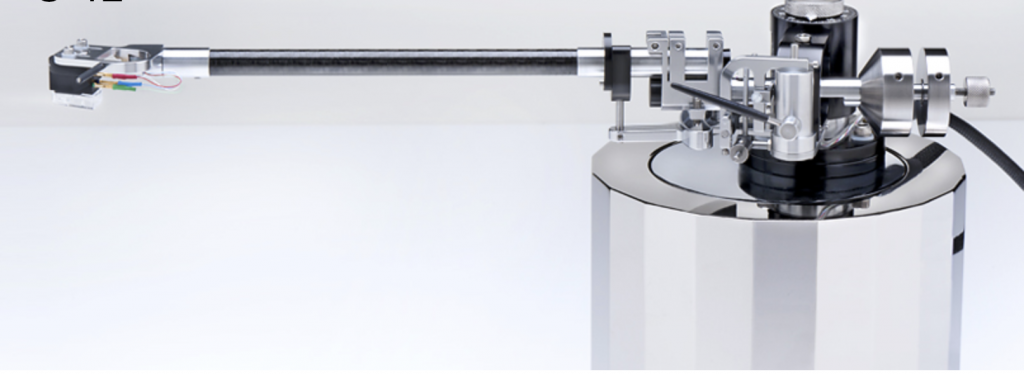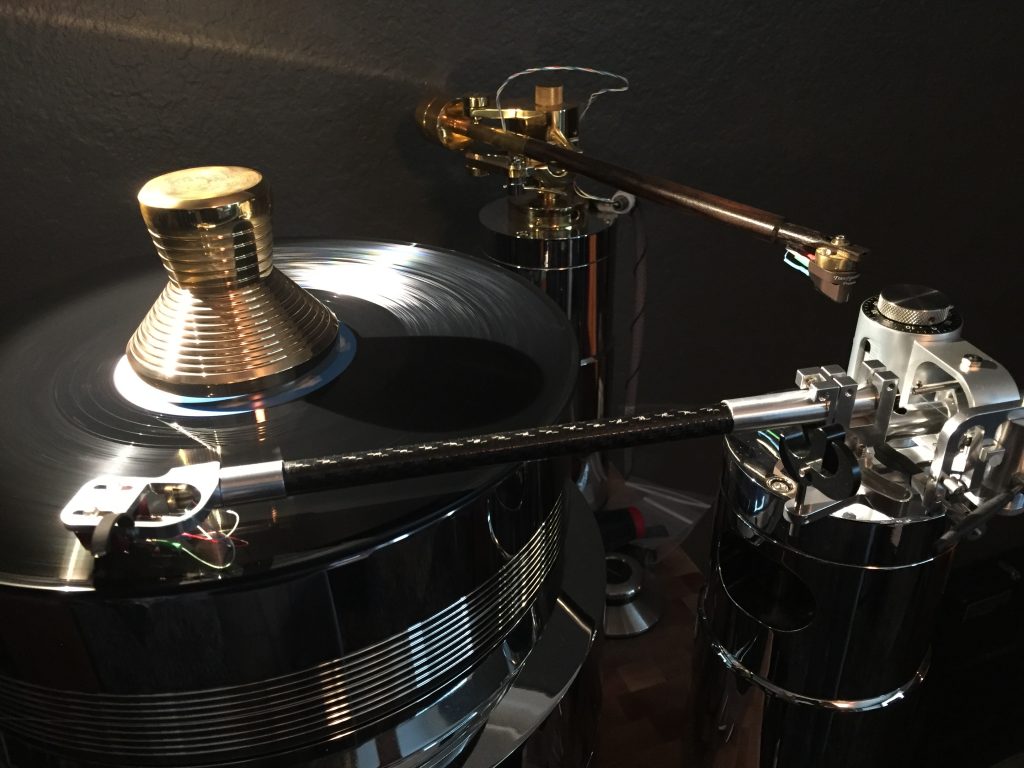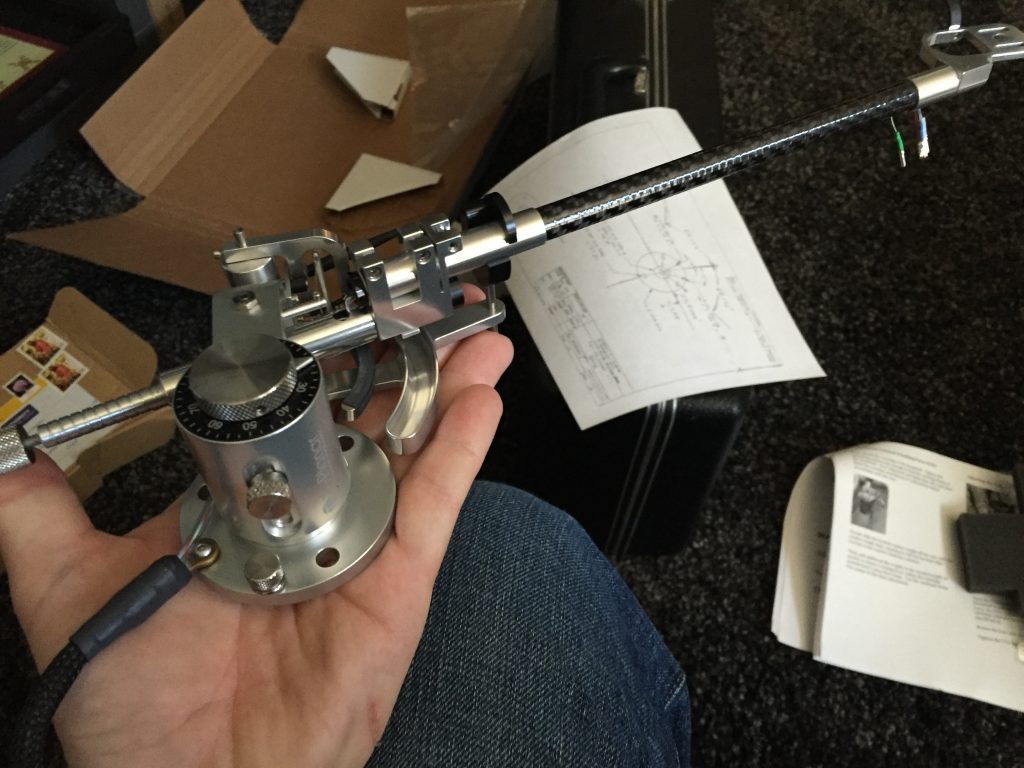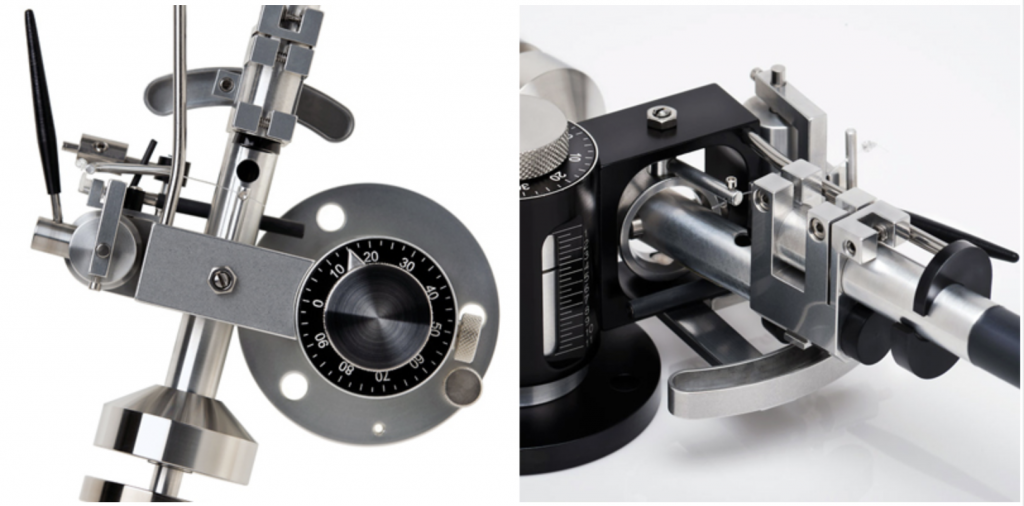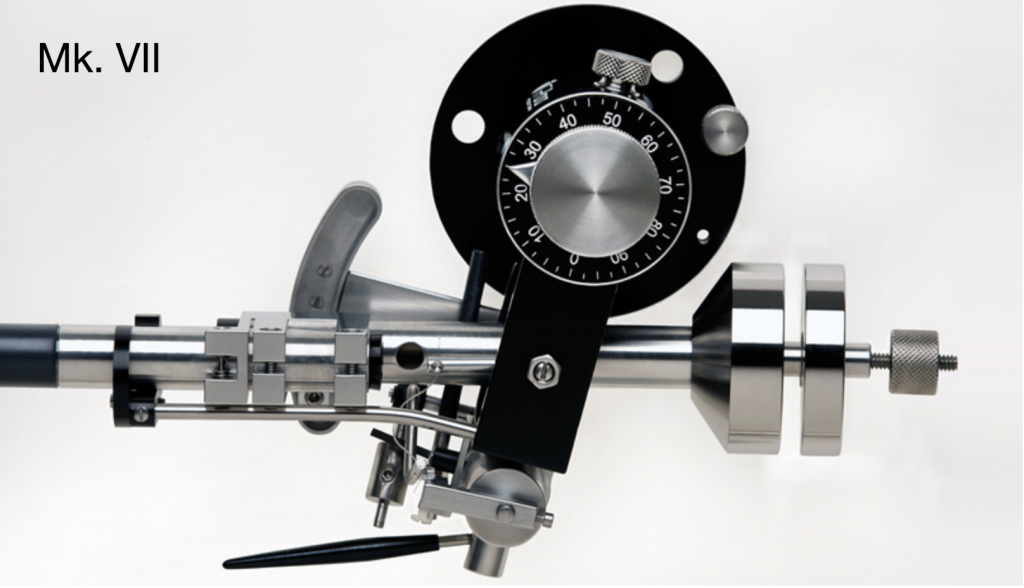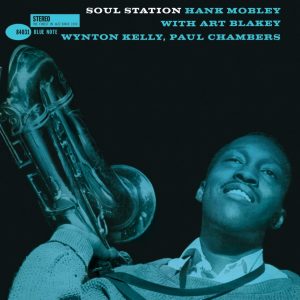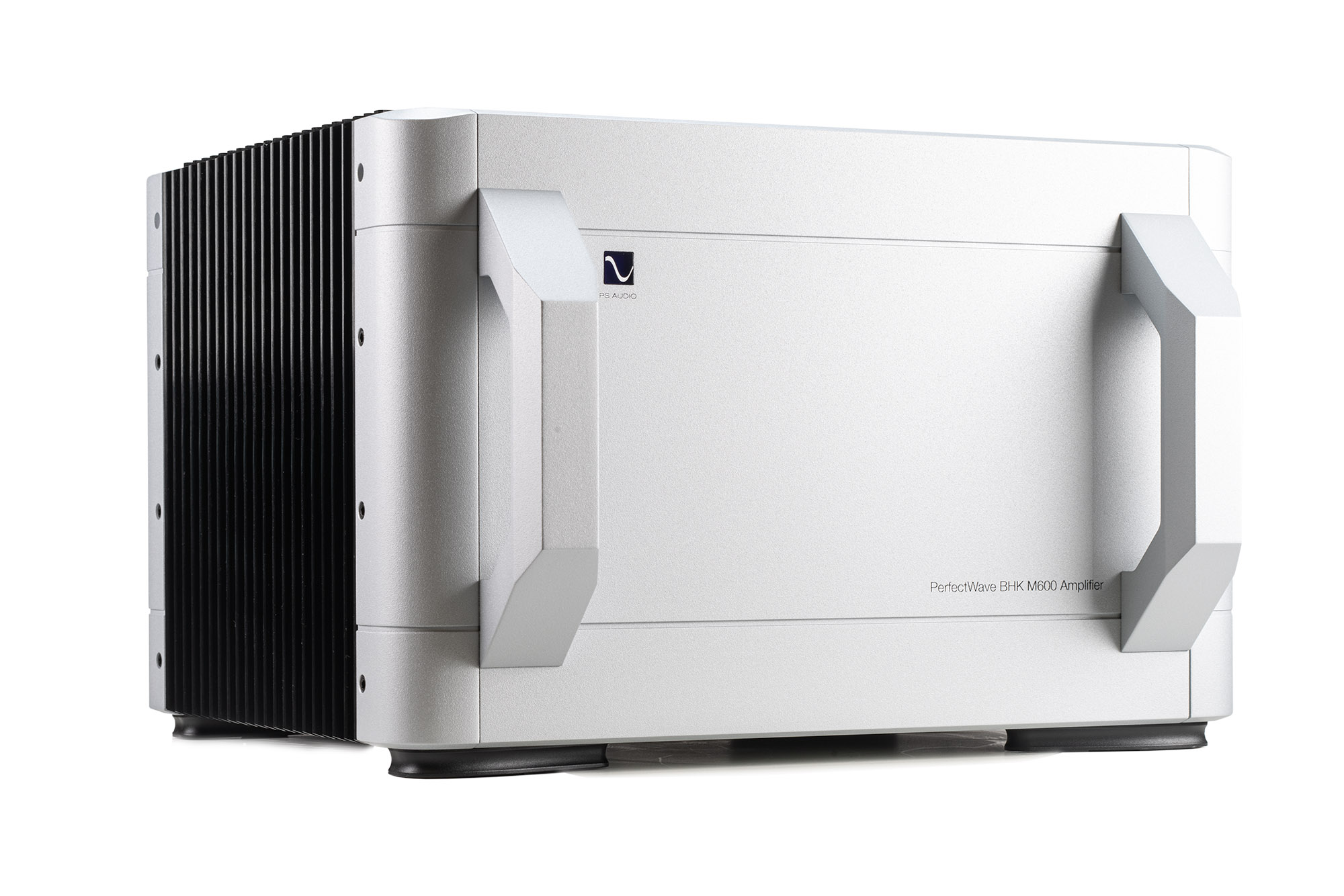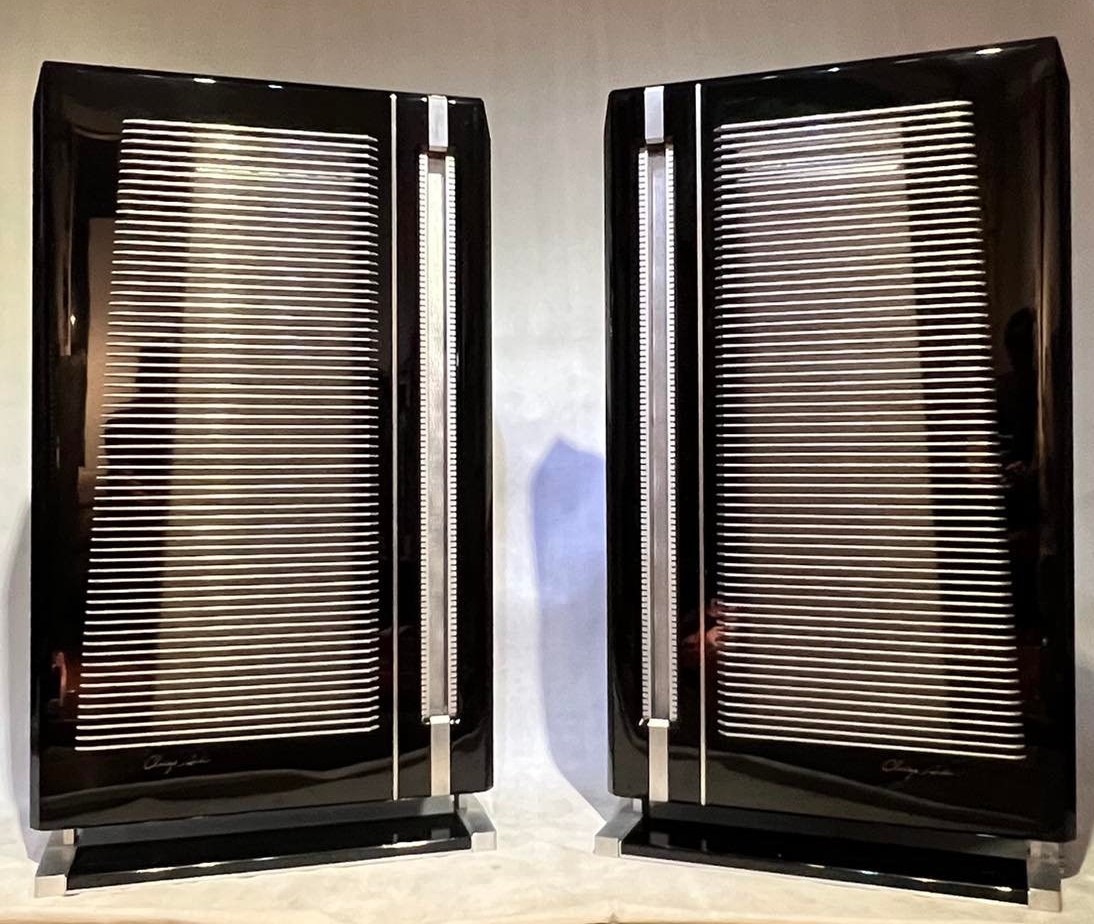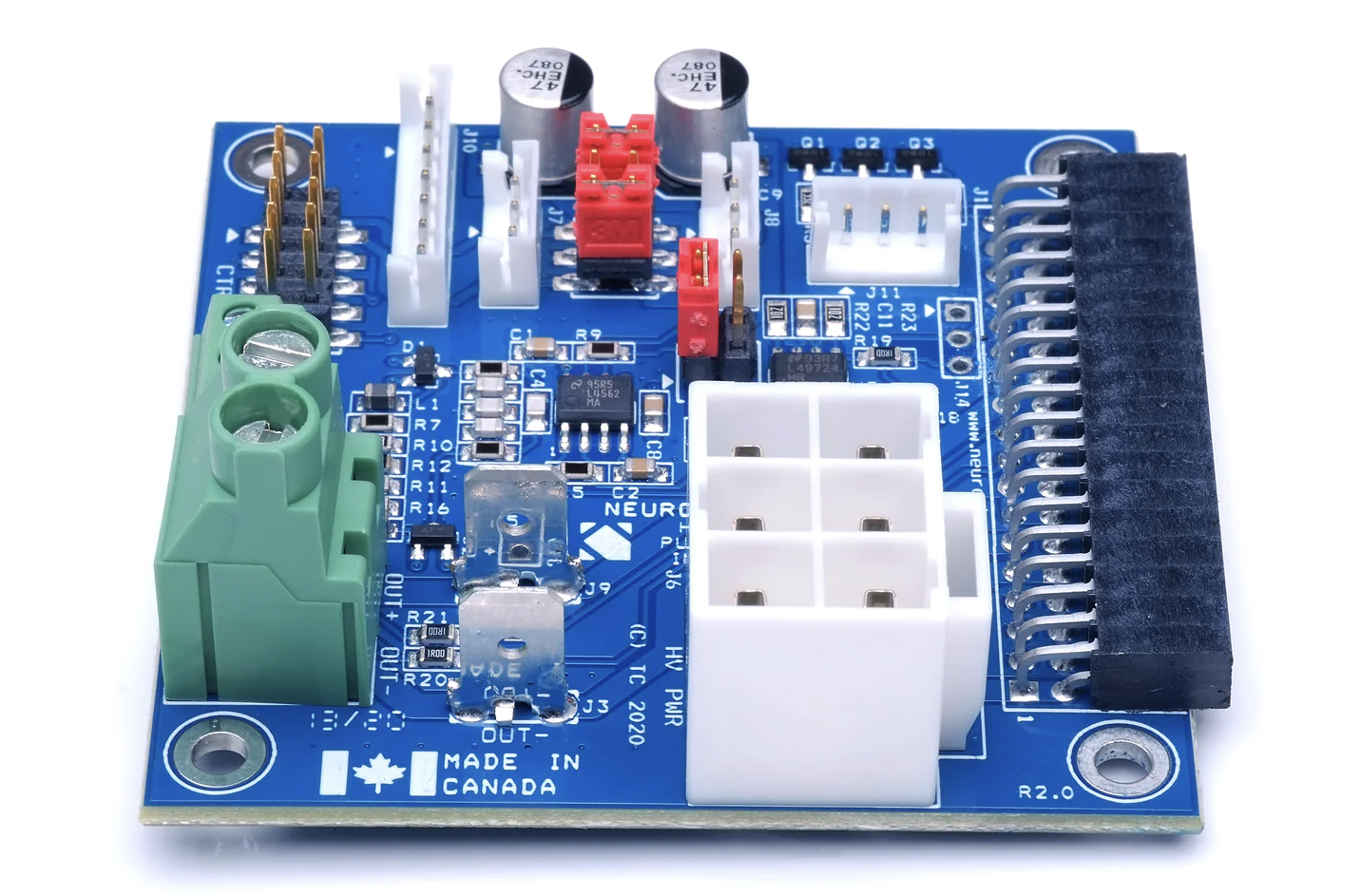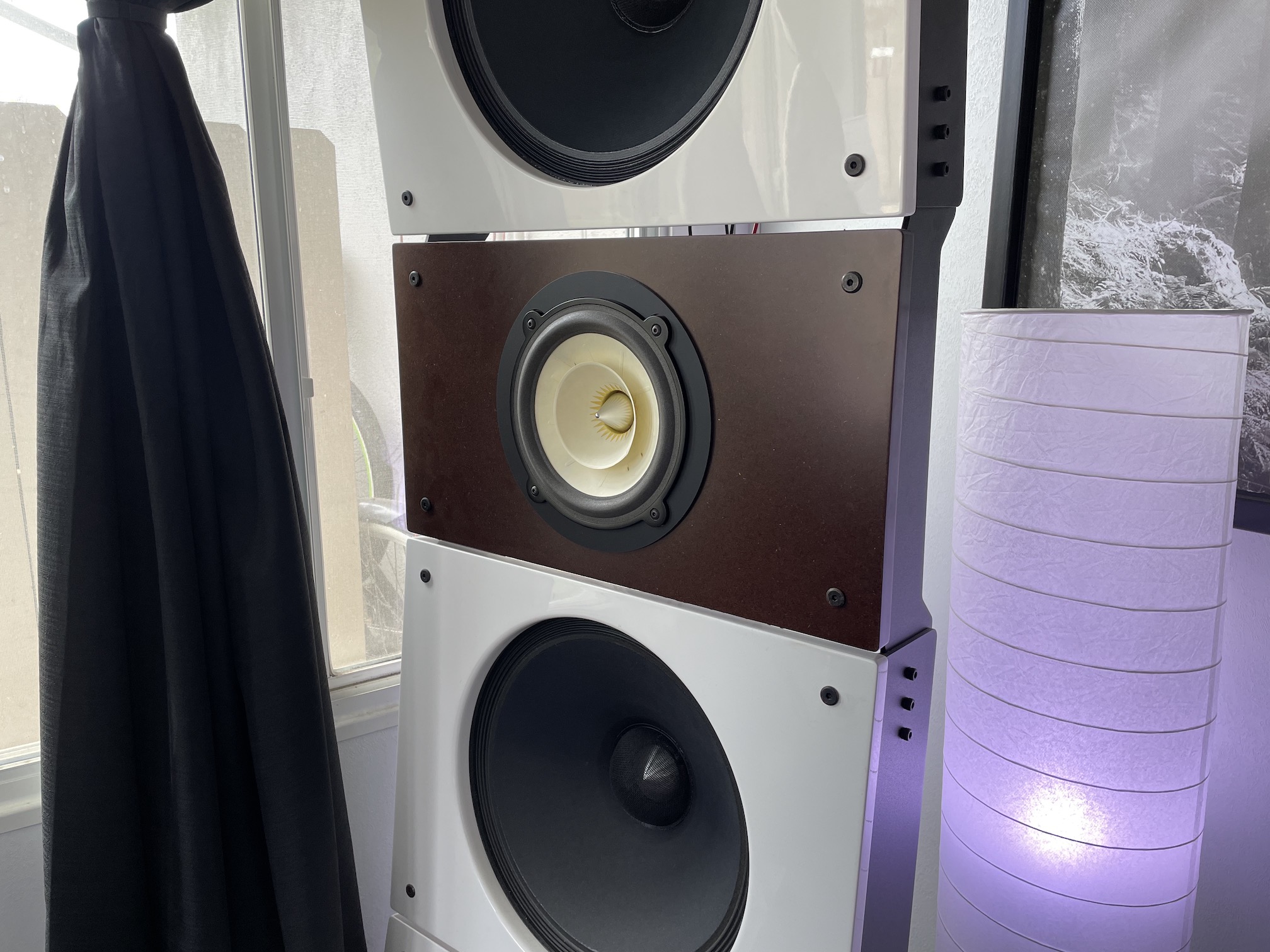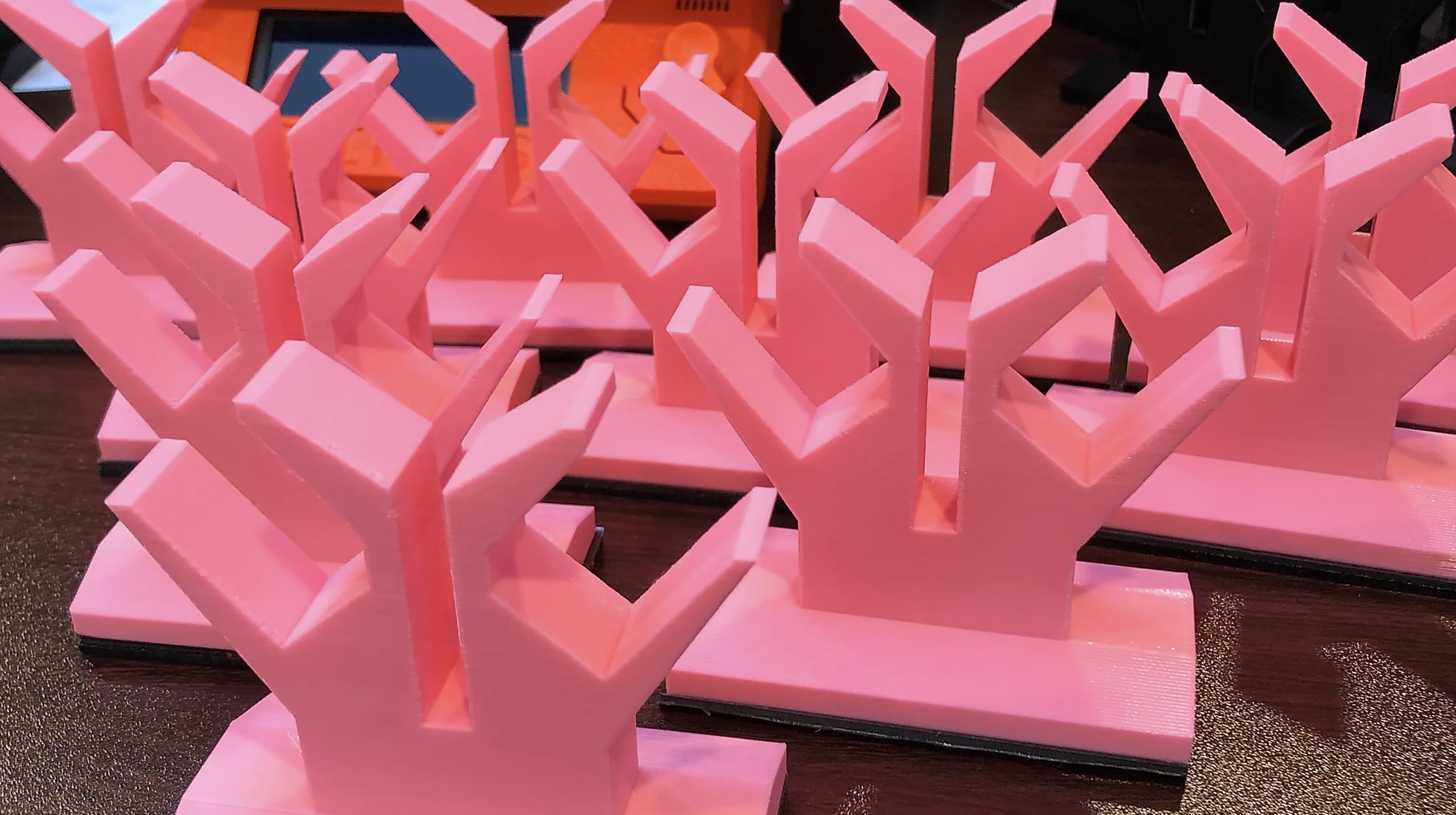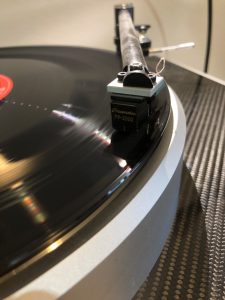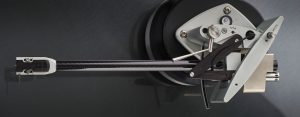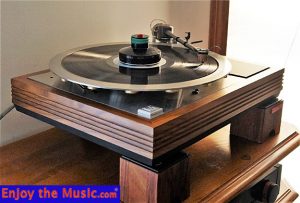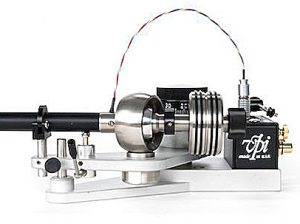If you are reading this article, it means you are at least interested in vinyl playback. Be prepared for an amazing rabbit-hole that will lead you to the holy grail if you are prepared to spend some money. I say that to keep the discussion honest, a proper vinyl playback rig can get costly. Is it worth it? Well, I would say yes—because once you hear it, it's impossible to lose the feeling it evokes.
My rig consists of a Triangle Art Signature Turntable, which I've written about before and ultimately ended up with it in my permanent system. I prefer the sound of a hefty table for a myriad of reasons, which came equipped with the Osiris 12" Ebony arm which is suspended using magnet technology. While I love the sound from that arm, it is a little finicky when it comes to playback. Not saying it's a bad thing, but it does make it a tad cumbersome when wanting to just play one song, or skip around a lot.
I recall being at various shows not only seeing the Triplanar arm being used, but also meeting the always jovial Tri Mai, who is the owner of Triplanar. We have had several deep discussions about the virtues of a proper tonearm with several adjustment options as well as easy to adjust VTA (more on that later). Eventually we settled on a review opportunity for the 12" Carbon Fiber U12 model. Since some tone arms mount differently than others, I had to have Tom of Triangle Art deliver a new tonearm platform with milled mounting points. The beauty of this is that I could have both tonearms on tap with different cartridges attached and to flip back and forth to my liking.
Once the box was delivered, it was pretty obvious Triplanar was at the top of their game. Included was everything one needed to properly mount and adjust such a tonearm. Mounting-jig, scale, a beautiful multi-page instructional guide with photos and more. With the great communication between Tri, Tom, and me, we were able to get up and running within a few hours. I will cover a few different things in this review; the sound, the aesthetics, and setup.
Features
- Carbon fiber wand with coaxial damping NEW
- 12" (308.80mm) effective length NEW
- Hand-polished components – rounded for resonance control NEW
- Larger silicone-fluid trough NEW
- Tonearm rest integrated with damping trough for resonance reduction NEW
- Pure silver internal tonearm wiring NEW
- Avionic bearings
- Damped head-shell
- Clamping yoke design that firmly couples the arm-tube to the bearing tube
- Bearings with hand-crafted, hardened and polished needle cones
- Bearings at record height
- Progressive anti-skating design
- Sophisticated system of decoupled counterweights
- Available in black or silver
Setup
Initially (I won't lie), I was a little intimidated by this entire ordeal. When you place your eyes on the tonearm, you can be a little overwhelmed by all of the adjustments, dials, numbers and such. While I will say I am technically inclined, I would say on a scale from 1-10, I would place this one as a 7/10 with regards to difficulty. A 7/10 I would say would be on the easy side of things as far as tonearms go, as setting up such a turntable with custom tonearms can place just about everything at a "10/10" with difficulty depending on one's skillset. It's a tough one here to depict as this is subjective, so if you have set up several tonearms then this should be a breeze—mainly because of the great documentation, but also the great level of communication from Tri. Out of the box you have to, first mount to your table and ensure it's in the right position using included mounting-jig, second attach the cartridge, third install liquid dampener into the trough, fourth adjust the VTA (height) depending on your table configuration (which is a cinch to adjust and nice due to wanting to try different platter configurations / mats and such), fifth adjust the weight using the included scale (or your own) for your cartridge, sixth connect to a phono stage, and then start listening. Sounds overly-simplified, but that is exactly what I did so, if I can do it, anyone can do it. Nothing on the tonearm feels cheap, loose, or under-engineered. In fact, using this tonearm gives you a feel of surgical precision and preciseness that really gives you confidence that you will have near-perfect playback every time it's used. Other arms I've touched just feel cheap, loose, and under-engineered where you just don't have confidence that it will always remain within spec. That alone can tarnish a playback session, causing you to worry too much about if it's set right or not.
Aesthetics
As the saying goes, beauty is in the eye of the beholder. Boring, I know, but I will not lie and admit that just like with attracting a mate, this is usually the first step of a review (unless I am contacted by a company wanting me to review their product). I was spellbound by its looks. The carbon fiber, the machined edges, the sheer perfection of it all. That was from afar! So sometimes when you get closer you start to notice imperfections, but I couldn't find one. You can tell this was well engineered from the inside-out. Even the way the liquid is injected into the trough is ingenious (and simple) using a syringe. It's an interesting contrast to my Osiris arm, which has its own form of beauty but is a completely different look. Triangle Art stuff is flashy, made with shiny materials and earth (wood). Such contrasting features are always a fun conversational topic of people wanting to listen or look at my audio system. Both timeless, perfect in their own right, but different for sure.
Sound
I would hope that this would be one of the most important attributes to anything in audio—sometimes though it doesn't happen that way, but I digress. The U12 is no slouch here. It simply sounds perfect, every time—just as you would want your turntable to operate. I have a system monitoring my platter speed to ensure it's right, as I have test records to ensure my tonearm and cartridge are set up right. I have basically "set it and forget it" and it hasn't needed anything since. The only adjustments I've made so far is the VTA (which can be done during playback if one is extra careful) depending on the material I have atop my platter. You see, most people neglect this adjustment (or lack it altogether) which can have a HUGE effect on one's sound experience. You will be missing material, or have an imbalance, or even put more wear on your cartridge or even your vinyl. Being able to adjust VTA on the fly like this goes to prove that the tonearm is well engineered. Otherwise if you attempt this, you will definitely damage something. Lots of delicate moving parts here so having a good grasp on it all is all the more important.
Once the tonearm was set up and broken in, I could tell that we had something really important here. Music just sounded more lively, and perfect. Like I've said before, there are so many moving parts to a proper vinyl playback system that if they aren't all lined up—it can really ruin the experience for people. Several things that are huge on this issue. First, the platform the turntable rests on. Is it solid and without resonance? Try the ol' knock test around the platform / stand. Does it induce a microphonic effect (can you hear it through your speakers?) Second, the setup parameters of the cartridge and your phono stage. Do you have the loading and gain set up properly? Third, ground loops and hum. When nothing is being played back, and volume is high, do you hear a 60/50Hz hum through your speakers? Dead silence is near impossible but if you can't hear anything while 6" away from your speakers, you're onto something. Fourth, do you have a properly adjusted tonearm that actually allows for fine adjustments such as Azimuth, VTA, anti-skating, etc.? And finally fifth, how decent is your vinyl? Was it produced with care, copied with care? Yikes! This list can be off-putting, for sure. But as I've said before—when the stars are aligned, nothing rivals it (well, maybe reel to reel tape, but that is way beyond the scope of this review).
The first album I tried with this new setup was Hank Mobley's Soul Station (the reissue by Music Matters, 2008). I love this particular release because it's perfect PRAT, quiet-ness (lack of bad sounding artifacts during quiet passages) and well duh, the music itself! The way this one was recorded / engineered can really give one a great sense of space if you have the right setup and using this tonearm with a Transfiguration Phoenix cartridge gave me some major goosebumps. It was eerily transformative, and upon closing my eyes I felt I was transported to the place of original recording. There really is no better way to describe it other than that.
Next onto something more risqué, Raime's Quarter Turns over a Living Line. This one is not for everyone, but for me it's an exhilarating (albeit) dark journey of dynamics and aural sensation that not only gets me into a different place intellectually, but played back on the right system, can really evoke a sense of synesthesia. No turntable setup has been able to really accomplish this, and in fact until I received this tonearm, I've always preferred its digital version. But with the U12 in place, this all changed. Before I knew it, side 1 was over and at that moment I wish I had been listening to the digital only because it simply "keeps going" without having to get off my butt, but once I was done with the ritual of flipping it over and lifting / lowering the tonearm and sitting back down, I was immediately reminded as to why it sounded better. Using this tonearm transported me to another place unworldly. I just don't know how else to put it.
I should also inject here the ease of use. I love how I can simply push the arm to where I want it, lower the arm and walk off as it's still lowering just trusting that it will go where I wanted it. So many other tonearms can't get this right. They are either just improperly engineered or not designed for constant predictive playback. Why not? To save on cost, maybe? Or maybe the designer doesn't fully grasp what is required here. I don't know the answer to everything, but I know that this tonearm belongs in the realm of perfection and vinyl playback.
I cannot say enough good things about how this tonearm changed my life and my perception of vinyl playback. It has it all. Looks, ease of use, consistency of playback, and durability. The price may be a little bit of a shocker to those just starting on this journey, but let me assure you; it is a wise investment choice as you can take this one to the grave with you.
Kudos to the Triplanar team and Tri Mai / Herb Papier (the original designer of earlier revisions... more on their website) for engineering such a thing of beauty. HIGHLY RECOMMENDED.
Tri-Planar U12 Tonearm
Retail: $9800
Triplanar




